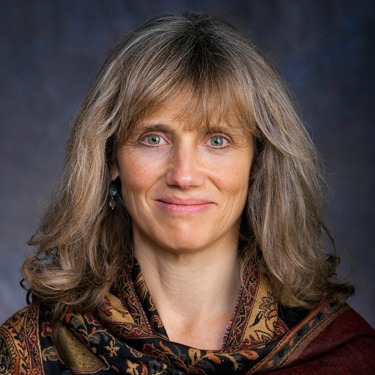Anne Douglas of Episode 30: Messages from Our Bodies and How Anahata Yoga Can Help You Listen is back on the show and this time she's here to talk yoga philosophy. Perhaps you'd really like to understand the philosophy of yoga but words like "vedic" "samkhya" and dates older than 1995 makes your brain want to take a nap. Sanskrit and history are not your forte. No problemo, start here! Who better to explain this stuff than a patient, knowledgeable teacher who happens to be passionate about how yoga philosophies help us resolve suffering. In this episode, Anne helpfully explains the two major schools of thought in yoga philosophy: dualism versus non dualism. Basically, are we one with nature or are we separate with nature? Depends. We go into depth to understand what these two philosophies mean in the bigger picture as well as to how we relate to life individually. By the end of the episode, you'll be cooing about purusha and prakriti like it ain't no thing. This episode is loaded so buckle in and get your learnin' on!
Key Nuggets:
- Origins of Yogic teachings date back 6500-7000 BCE in the Samkhya philosophy. The philosophy was primarily dualistic (spirit and all of nature are separate).
- The idea was to end suffering as a result of coming to know ourselves as the seer (purusha). Once we see that then we'd be in abiding peace and unending equanimity. Ultimately the suffering ends.
- The under-riding philosophy in our modern day yoga practice is dualism (ex. The teachings of Patanjali) but there are also traces of non-dualistic philosophy.
- Dualistic View: freedom (aka. The end of suffering) arises from the understanding of who we really are which is that we are not nature but are pure consciousness. We are the quiet calm of pure awareness that doesn’t succumb to changing nature of anything. In this school of thought, things that change are nature and what does not is pure consciousness.
- Our practice of yoga, especially the 8 limbs, is designed to help refine our senses so that we can further open to the pristine witnessing awareness.
- This is a more masculine view that’s cognitive. Based in freedom coming from knowing ourselves as consciousness.
- Non Dualistic View: purusha (consciousness) and prakriti (nature) are one. They are not separate. Prakriti is a rising of purusha and is not meant to be transcended. It (our bodies, nature….) is meant to be cherished, loved and used as a pointer to direct us to our deeper nature so that we can live in a world where both are true. We can be homeowners who raise families, own cars and live a modern day life but also, we are spirit.
- This is more of a feminine view. Embraces body as a tool to help realize the fullness of who we are. To help us embrace the human that we are in this lifetime but also the spirit that extends beyond this lifetime.
- In dualistic philosophy, we find freedom when we dis-identify with our limiting beliefs. This is true to an extent but the hazard is that if we keep going then we no longer see that we are part of our bodies (ie. we dis-identify with prakriti (nature, bodies...) because we are pure consciousness). This can subtly create a split between bodies and consciousness. We may end up using body and nature for our benefit but we don’t take care of it. Maybe we feel compelled to override prakriti (nature) and fail to realize the repercussions of our actions.
- Different schools of philosophies come from the natural evolution of ancient yogi’s practices (just like we have)
- Quick breakdown of the order of how these philosophies developed:
- Samkhya dualistic philosophies
- Patanjali’s yoga sutras
- Vedanta
- Advaita Vendanta
- Kashmir Tantric Path
- To embrace the nondual practice in your daily life, try to notice if there are any areas in your life that you are overriding. Are there places where you're not paying attention to body needs or emotional issues (ie. trying to prematurely transcend)? Allow yourself to embrace your body, thoughts and emotions and not seeing it as bad or judging them.
- It’s one thing to have an objective thought of yourself but it’s another not to heed the call of your body (ex. Pushing too far in yoga practice to the point of injury).
- An understanding of each of the philosophies is good to get but at the end of the day, move into this like how we do with the rest of yoga – use what works and leave what doesn’t.
- Suffering arises from our myth of separation. We suffer when we take ourselves as only this body. We don’t know who we really are. This is how all schools of yoga philosophies view suffering.
- Each of us are really trying to find our way out of suffering and into freedom. Through this lens we are able to better understand the actions of others (ex. Why our partners act a certain way, why our dogs act a certain way….)
- In the most idealistic scenario, we recognize ourselves as consciousness and in turn see the connection between us and everything else. We see the consequences of our actions. While we still feel painful emotions such as sadness, anger and despair, our home ground is in equanimity.
- The three yogic teachings that you can use to stop suffering:
- The answers to the end of suffering is already within. Stop searching and just look inside. That’s the point of an asana practice – to soothe the nervous system so that we can experience the stillness that’s already here.
- Recognize that every point of suffering in our lives is just a messenger pointing us back home to our truth. This brings us back to the first point, which is to sit with the disharmony. Anne advises not to just take her word for it though. In the wisdom of the Samkhya yogis, experiment and find this out for yourself.
- There is no "other". If you were to run an experiment so that you perceive that there is no "other", how does that change the way you operate? Most likely with more softness and kindness.
- Two most powerful questions to bring us back in the height of emotion:
- What would love do now? (love encompasses us and the other)
- What would peace do now?
Links:
If you have any questions for Anne or want to learn more, connect with her through:
Website: www.anahatatherapy.ca
Email: anahatayoga@telus.net


